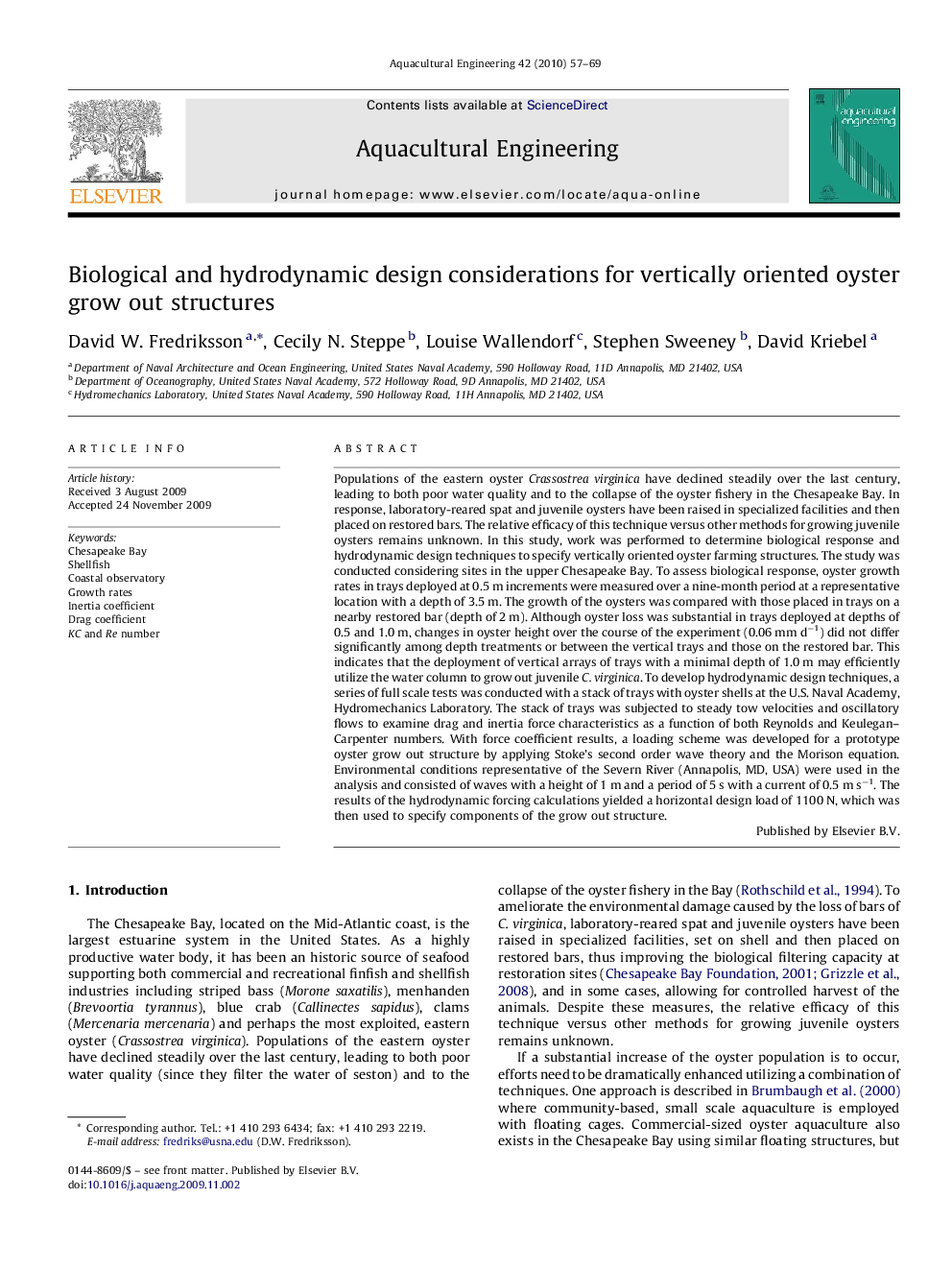| Article ID | Journal | Published Year | Pages | File Type |
|---|---|---|---|---|
| 6381484 | Aquacultural Engineering | 2010 | 13 Pages |
Abstract
Populations of the eastern oyster Crassostrea virginica have declined steadily over the last century, leading to both poor water quality and to the collapse of the oyster fishery in the Chesapeake Bay. In response, laboratory-reared spat and juvenile oysters have been raised in specialized facilities and then placed on restored bars. The relative efficacy of this technique versus other methods for growing juvenile oysters remains unknown. In this study, work was performed to determine biological response and hydrodynamic design techniques to specify vertically oriented oyster farming structures. The study was conducted considering sites in the upper Chesapeake Bay. To assess biological response, oyster growth rates in trays deployed at 0.5 m increments were measured over a nine-month period at a representative location with a depth of 3.5 m. The growth of the oysters was compared with those placed in trays on a nearby restored bar (depth of 2 m). Although oyster loss was substantial in trays deployed at depths of 0.5 and 1.0 m, changes in oyster height over the course of the experiment (0.06 mm dâ1) did not differ significantly among depth treatments or between the vertical trays and those on the restored bar. This indicates that the deployment of vertical arrays of trays with a minimal depth of 1.0 m may efficiently utilize the water column to grow out juvenile C. virginica. To develop hydrodynamic design techniques, a series of full scale tests was conducted with a stack of trays with oyster shells at the U.S. Naval Academy, Hydromechanics Laboratory. The stack of trays was subjected to steady tow velocities and oscillatory flows to examine drag and inertia force characteristics as a function of both Reynolds and Keulegan-Carpenter numbers. With force coefficient results, a loading scheme was developed for a prototype oyster grow out structure by applying Stoke's second order wave theory and the Morison equation. Environmental conditions representative of the Severn River (Annapolis, MD, USA) were used in the analysis and consisted of waves with a height of 1 m and a period of 5 s with a current of 0.5 m sâ1. The results of the hydrodynamic forcing calculations yielded a horizontal design load of 1100 N, which was then used to specify components of the grow out structure.
Related Topics
Life Sciences
Agricultural and Biological Sciences
Aquatic Science
Authors
David W. Fredriksson, Cecily N. Steppe, Louise Wallendorf, Stephen Sweeney, David Kriebel,
